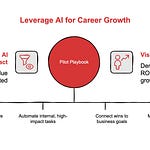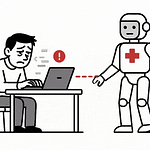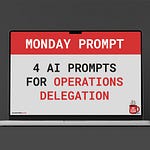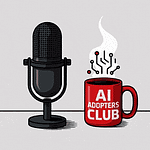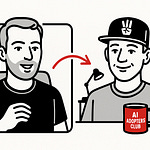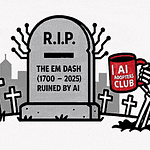Hey Adopter,
So I sat down with Ahmed Mekallach recently, and let me tell you – this guy is redefining how construction companies are using AI in ways that will make your corporate digital transformation look like it's still figuring out how to use Excel.
Ahmed's a civil engineer with a decade of experience who's now leading Myte Group, where they're building custom reasoning systems that take AI way beyond the "let me ask ChatGPT" approach most companies are still stuck on. His work spans from construction to healthcare, but what caught my attention was how he's solving problems in one of the most paper-heavy, archaic industries out there.
Construction's Trillion-Dollar Problem
Let's be honest – construction has been about as quick to adopt new tech as your uncle is to give up his flip phone. The stats are painful:
90% of large construction projects run over budget (by a whopping 80% on average)
They finish about 20 months behind schedule
The productivity gap represents a $1 TRILLION opportunity
Most construction companies are essentially "data-handling" entities outside of physical labor – yet they're drowning in paperwork, manual estimating, and field management processes that haven't changed since the 90s.
Beyond Generic AI
Here's where things get interesting (and where you might want to take notes for your industry). Ahmed's approach isn't about slapping ChatGPT onto existing problems. Instead, they're building custom reasoning systems that:
Embed domain expertise into AI workflows – Instead of generic responses, these systems understand construction-specific constraints, codes, and practices.
Compress planning timelines dramatically – What used to take weeks (creating roadmaps, estimating costs) now takes hours or even minutes.
Create full visibility and control – Unlike black-box AI, these systems provide detailed outputs (flowcharts, estimates, timelines) that can be audited and adjusted.
One example Ahmed shared was their solution that helps construction teams program their experience and optimize everything from estimating to fieldwork. The results? Some companies have cut delays by 30% and reduced costs by 20% on major projects.
Lessons for Every Industry
While you might not be in construction, there are some brilliant takeaways from Ahmed's approach that could revolutionize how you implement AI in your own field:
1. Focus on Workflow-Specific AI, Not Generic Tools
The companies seeing real ROI aren't just using off-the-shelf AI. They're creating custom reasoning systems that understand their specific domain challenges.
Quick Win: Identify your most data-heavy workflow and map out all the domain expertise that isn't captured in your current tools. That's your AI goldmine.
2. Domain Experts Are Your New Programmers
Ahmed predicts that future programmers won't be coders – they'll be domain experts who can "program their experience" into AI systems.
Action Step: Partner your most experienced team members with your tech people. The magic happens when domain knowledge meets technical implementation.
3. Start Small, With Measurable Results
The most successful implementations Ahmed's seen start with a targeted use case where AI can make a noticeable impact.
Try This: Choose one workflow where you're currently losing time or money, establish baseline metrics, and implement a focused AI solution. Measure the difference in 60 days.
Hidden ROI
What struck me most from our conversation was how the real value isn't just in automating tasks – it's in capturing institutional knowledge that would otherwise walk out the door when experienced staff leave.
By building custom reasoning systems, companies are essentially creating digital versions of their best practices that can be scaled, improved, and passed on. That's a competitive advantage that generic AI simply can't deliver.
AI isn't just another tech tool – it's quickly becoming what Ahmed calls a "source of intelligence" that can be piped into any industry, just like electricity.
The question isn't whether you'll adopt AI. It's whether you'll be an early winner or playing catch-up for the next decade.
Adapt & Create,
Kamil












